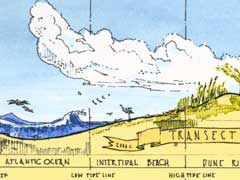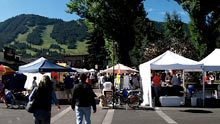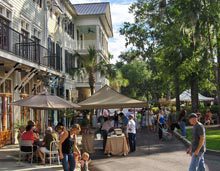 The past eight Civitas writings have focused on creating and designing great places. We have discussed streets, agriculture, designing in context, and the public and private realms, all of which must be carefully thought out to make a village, town or city great. What we have not discussed too much is what makes the heart of great places: community.
The past eight Civitas writings have focused on creating and designing great places. We have discussed streets, agriculture, designing in context, and the public and private realms, all of which must be carefully thought out to make a village, town or city great. What we have not discussed too much is what makes the heart of great places: community.
In addition, there has been a “buzz” recently about New Urbanism and the terminology that accompanies it: old urbanism, transect, density. We would like to paint the picture of what New Urbanism is and how it helps to create community.
The physical environment is a framework that can make the creation of community easy or difficult. Community is the people and cultures that fill the physical environment. In practical terms, it is security, commerce and communication structured in a way that is accepting of everyone’s culture and heritage. So built places that accommodate these personal interactions truly facilitate community.
They also spur economic development. The ability to have a chance encounter, as well as a place for ideas to begin and take shape – coffee shop, local pub, park – are the two greatest signs of a real place. The chance encounters create personal relationships between different types of individuals. The ideas eventually can become enterprises that allow the local economy to grow.
The New Urbanism movement, formally begun in 1981, recognized that it is very difficult to create this sense of community in places that are solely automobile dependent. The more time one spends isolated in a vehicle, the less opportunity they have for chance encounters and relationships with their neighbor. Most places in America that had this tightly woven connectedness were the small villages and larger towns of the late 1800s and early 1900s. These are called Old Urbanism and the New Urbanism movement aimed to recreate the sense of community these older towns had by reintroducing the planning principles that American planners once didn’t think twice about.
Beaufort is very lucky to have great examples of old urbanism all around us: Downtown Beaufort, Downtown Port Royal, Frogmore, Historic Bluffton, Savannah and Charleston. These models exemplify old urbanism, and although none of them are exactly alike, they all contain opportunity for chance encounters and places for ideas to be exchanged.
One of the tools the New Urbanism uses to shape the framework of the physical environment is The Transect. This is a word originally used by environmentalists to classify different parts of the natural environment – take a cross section from the ocean to the upland forest and see what each segment is composed of: what plants grow there and how tall they are, what animals live there, where the water comes from. Different sections have different inhabitants and characteristics.
This methodology has been adapted to the physical environment as well. Take a cross section of settlement types, from the preserved environment with no human habitation (a state park or national forest), to a rural farmstead, all the way up to a dense city. This rural-to-urban transect consists of six distinct zones. See what form the built environment needs for the different types of people living in each zone, and how that built environment enhances community life across the transect. An extroverted, young professional would love to live above a lively street in a downtown environment, while a growing family may want to have a bit more room to spread out in a quieter neighborhood. Both, however, have similar basic daily needs and access to those should not be very far from either location.
The options this method creates allow for urbanism, new or infill, that is specifically designed according to the character of an existing village, town, city or region. Future growth – 25, 50,100 years – is always projected, so towns aren’t designed to remain stagnant, which is why the word density is often associated with New Urbanism. But NU is not about density. It is about creating new, and preserving old compact, compatible, connected, walkable, environmentally conservative villages, towns and cities that give people a choice about where they want to live. NU considers the future of place. Beaufort is now 300 years old and the buildings and places that remain intact and loved by many are those that are timeless, designed for the long run.
This article was written for Lowcountry Weekly by the Congress for the New Urbanism – Carolinas Chapter. For more information, visit www.cnu.org







